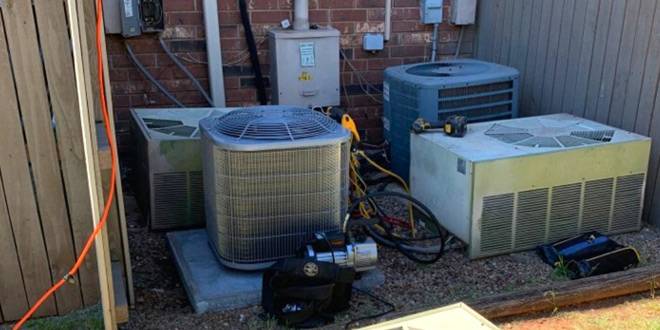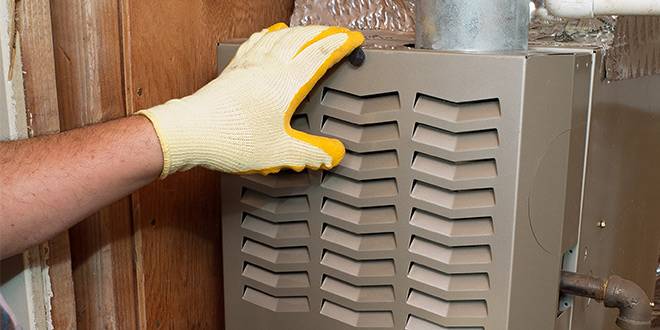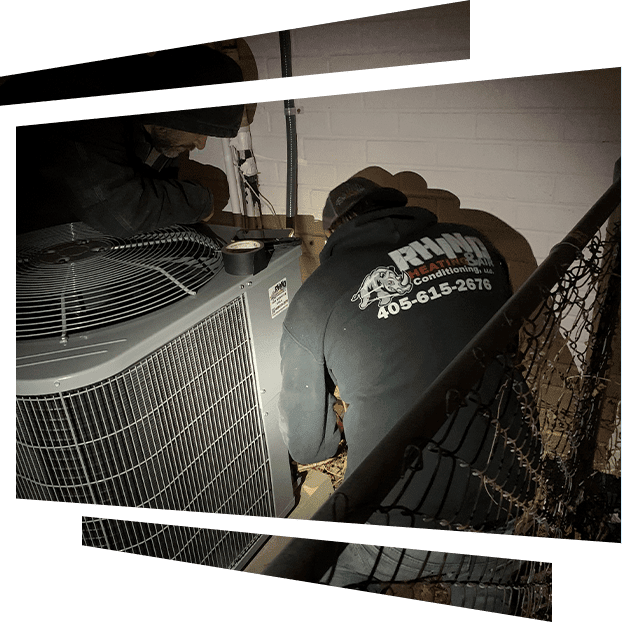
In the vibrant city of Oklahoma City, where commercial buildings stand tall and bustling with activity, staying ahead of the curve is crucial. Discover the latest trends in HVAC and energy efficiency that can help commercial building owners save money and reduce their environmental impact.
Smart Thermostats and Building Automation
In today’s rapidly evolving commercial building landscape, the integration of smart technologies has become increasingly prevalent, offering unprecedented levels of control and efficiency. Two key innovations driving this transformation are smart thermostats and building automation systems.
Smart Thermostats:
Precise Control: Smart thermostats enable precise control over heating and cooling systems, allowing building managers to set specific temperature levels for different zones based on occupancy and comfort requirements.
Energy Optimization: By leveraging occupancy sensors and learning algorithms, smart thermostats can adjust temperature settings dynamically, optimizing energy usage without sacrificing comfort.
Remote Access: Smart thermostats often come with remote access capabilities, allowing users to monitor and adjust settings from anywhere using a smartphone or computer.
Integration with Other Systems: Smart thermostats can integrate with other smart devices and building automation systems, enabling seamless control and coordination of HVAC, lighting, and security systems.
Building Automation Systems:
Integration of Systems: Building automation systems (BAS) integrate various building systems, including HVAC, lighting, and security, into a single centralized platform.
Centralized Control: BAS allows for centralized control and monitoring of all building systems, providing building managers with real-time insights and control over energy usage and building performance.
Energy Optimization: By coordinating the operation of different systems based on occupancy and usage patterns, BAS can optimize energy usage and reduce overall operating costs.
Automated Responses: BAS can be programmed to respond automatically to changing conditions, such as adjusting HVAC settings based on occupancy or natural light levels, further enhancing energy efficiency.
Energy Recovery Ventilation (ERV) systems
Energy Recovery Ventilation (ERV) systems play a crucial role in enhancing indoor air quality (IAQ) while improving energy efficiency in commercial buildings. Here’s a detailed look at how ERV systems work and their benefits:
Heat and Coolness Recovery: ERV systems recover heat or coolness from exhaust air before it is expelled from the building. This recovered energy is then used to pre-condition incoming fresh air, reducing the load on the heating, ventilation, and air conditioning (HVAC) systems.
Improved Energy Efficiency: By preconditioning incoming air, ERV systems reduce the amount of energy needed to heat or cool the air to achieve the desired indoor temperature. This can lead to significant energy savings and lower operating costs.
Moisture Control: ERV systems also help control indoor humidity levels by transferring moisture between the incoming and outgoing air streams. This can help prevent issues such as mold growth and improve occupant comfort.
Enhanced Indoor Air Quality: By continuously exchanging stale indoor air with fresh outdoor air, ERV systems help remove indoor pollutants and allergens, improving IAQ and creating a healthier indoor environment for building occupants.
Temperature and Humidity Balance: ERV systems help maintain a more consistent indoor temperature and humidity level by transferring heat and moisture between the incoming and outgoing air streams. This can lead to increased comfort for building occupants.
Compliance with Building Codes: Many building codes and standards now require the use of energy recovery ventilation systems in commercial buildings to improve energy efficiency and indoor air quality.
Variable Refrigerant Flow (VRF) systems
Variable Refrigerant Flow (VRF) systems are a highly efficient and versatile HVAC technology that offers significant benefits for commercial buildings. Here’s a detailed explanation of how VRF systems work and their advantages:
Individualized Comfort Control: VRF systems allow for individualized control of indoor units, enabling occupants to adjust the temperature and airflow in different zones according to their preferences. This level of control enhances comfort and improves overall satisfaction among building occupants.
Variable Refrigerant Flow: The key feature of VRF systems is their ability to vary the flow of refrigerant to indoor units based on the heating or cooling demands of each zone. This variable flow allows the system to deliver precise amounts of heating or cooling to each zone, maximizing comfort and energy efficiency.
Energy Savings: By adjusting the flow of refrigerant based on demand, VRF systems can significantly reduce energy consumption compared to traditional HVAC systems. The ability to heat or cool only the zones that need it at any given time helps minimize energy waste and lower operating costs.
Improved Comfort: VRF systems provide more consistent and precise temperature control compared to traditional HVAC systems. This results in a more comfortable indoor environment for building occupants, with fewer temperature fluctuations and hot/cold spots.
Quiet Operation: VRF systems are known for their quiet operation, making them ideal for environments where noise is a concern, such as offices, hotels, and residential buildings.
Flexible Design: VRF systems offer greater flexibility in system design compared to traditional HVAC systems. They can accommodate a wide range of building sizes and layouts, making them suitable for both new construction and retrofit projects.
Easy Installation and Maintenance: VRF systems are relatively easy to install and require less maintenance than traditional HVAC systems. This can result in lower installation costs and reduced downtime for maintenance.
High-Efficiency HVAC Equipment
Upgrading to high-efficiency HVAC equipment is a smart investment for commercial buildings, offering numerous benefits in terms of energy savings, cost reduction, and environmental impact. Here’s a closer look at high-efficiency HVAC equipment and its advantages:
Energy Efficiency: High-efficiency HVAC equipment, such as ENERGY STAR-rated units, are designed to operate more efficiently than standard units. They use advanced technologies, such as variable-speed motors and advanced compressor designs, to reduce energy consumption and lower operating costs.
Cost Savings: By reducing energy consumption, high-efficiency HVAC equipment can lead to significant cost savings over time. While the upfront cost of high-efficiency equipment may be higher than standard units, the long-term savings in energy bills can more than offset the initial investment.
Environmental Benefits: High-efficiency HVAC equipment helps reduce greenhouse gas emissions and other pollutants associated with energy production. By lowering your building’s energy consumption, you can reduce its environmental impact and contribute to a more sustainable future.
Improved Comfort: High-efficiency HVAC equipment is designed to provide more consistent and precise temperature control, leading to improved comfort for building occupants. They can also help reduce humidity levels and improve indoor air quality, creating a healthier indoor environment.
Examples of High-Efficiency HVAC Equipment:
Variable-Speed Air Conditioners:
These units can adjust their speed based on the cooling needs of the building, reducing energy consumption during periods of lower demand.
Heat Pumps:
High-efficiency heat pumps can provide both heating and cooling, using less energy than traditional HVAC systems.
Geothermal Heat Pumps:
These systems use the earth’s natural heat to provide heating and cooling, offering significant energy savings and environmental benefits.
High-Efficiency Furnaces:
These furnaces use advanced technology to maximize fuel efficiency and reduce heat loss, leading to lower energy bills.

Building Energy Management Systems (BEMS)
BEMS: BEMS help monitor and control energy usage in buildings, providing insights into energy consumption patterns and opportunities for optimization.
Optimize Your Energy Efficiency in 2024
Stay ahead of the curve with Rhino Heating & Air Conditioning! Contact us today to learn how our energy-efficient HVAC solutions can help your commercial building save money and reduce its environmental impact. Upgrade to the latest trends in HVAC technology and energy efficiency. Go green with Rhino Heating & Air Conditioning! 🌿


